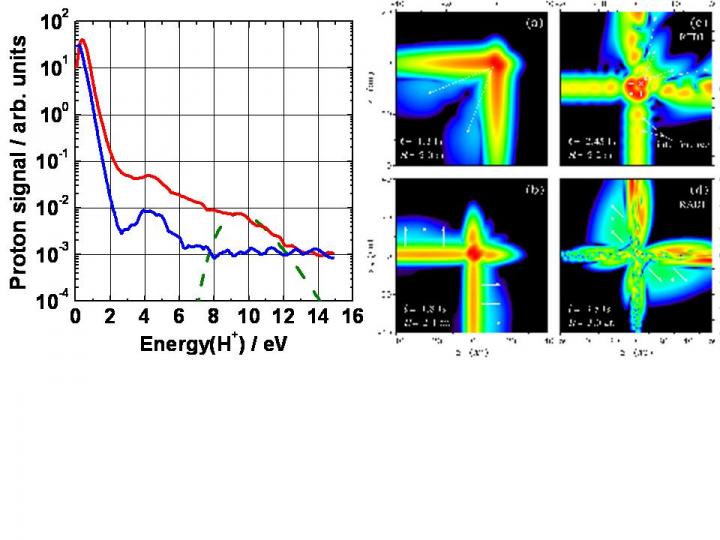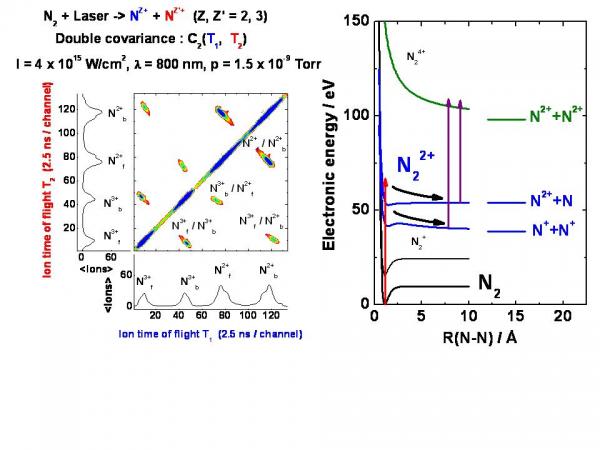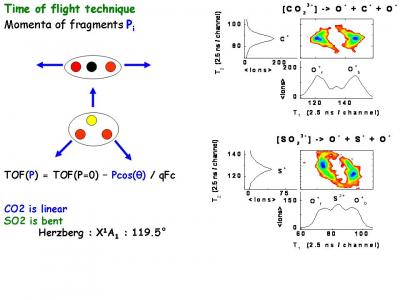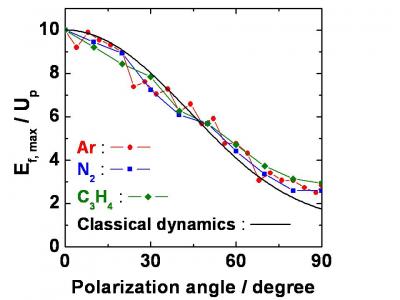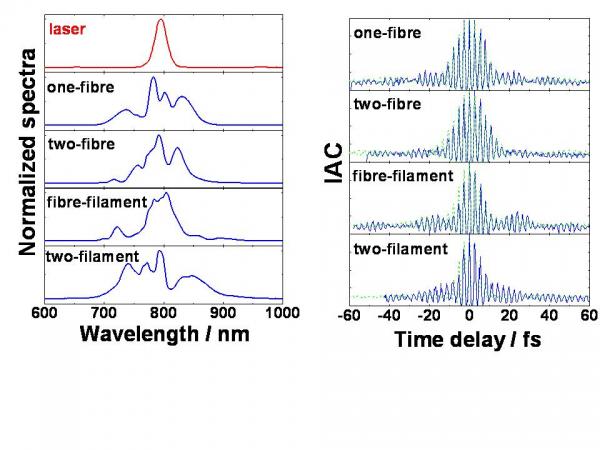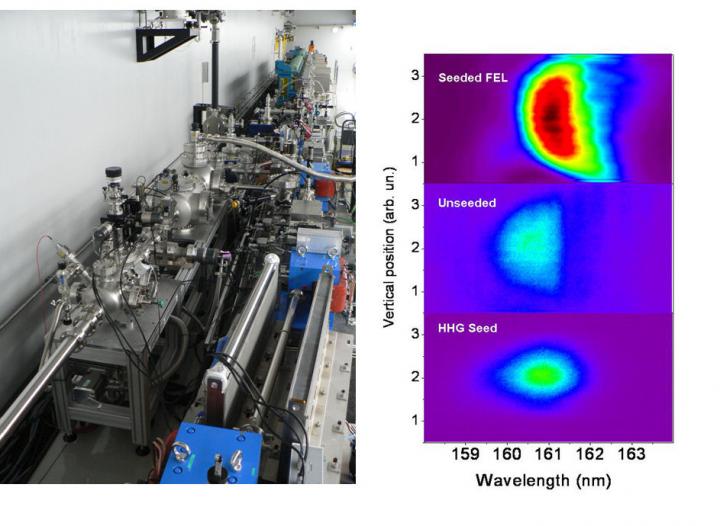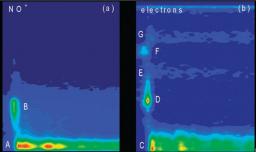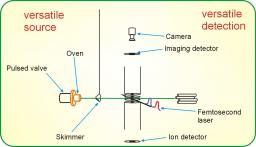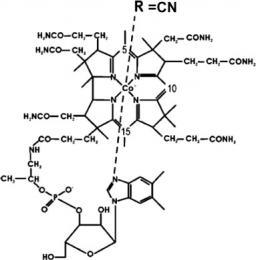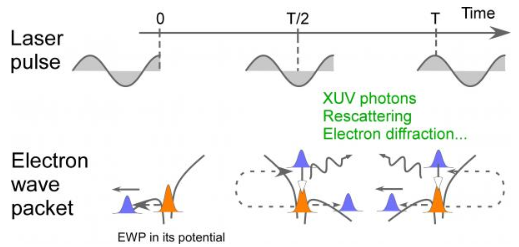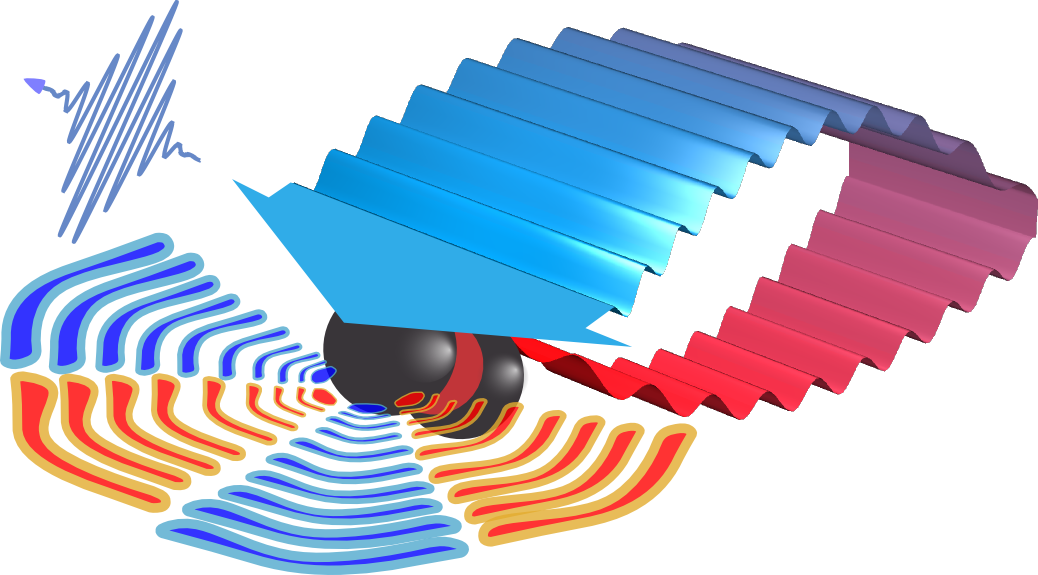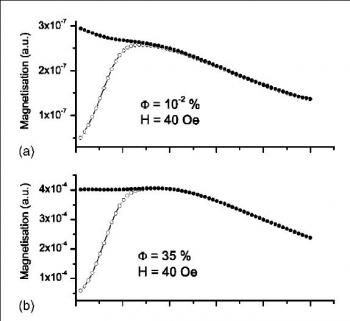10 décembre 2010, 11h, LARSIM, salle 50
Miklos Rédei (LSE) "Is algebraic relativistic quantum field theory causally complete?"
A probabilistic theory is called causally complete if it provides a causal explanation of all the correlations it predicts. The causal explanation can be of two sorts: in terms of a causal connection between the correlated entities, or in terms of a so-called common cause of the correlation. The talk defines first the notion of common cause and causal completeness in classical probability spaces and reviews some results on the problem of causal completeness of classical probability theories. This is followed by recalling results showing that Algebraic Quantum Field Theory (AQFT) predicts correlations between projections in algebras localized in spacelike separated spacetime regions. Since a causal link between spacelike separated entities is prohibited, an explanation of these correlations should be given in terms of suitably localized common causes. The talk defines three notions of localized common causes in AQFT and raises the question of whether the axioms of AQFT entail the existence of such localized common causes. It is shown that weakly localized common causes exist under certain assumptions but it remains open whether more strongly localized common causes exist.
16 décembre 2010, 17h, ENS, salle des Actes
Jos Uffink (Universite d'Utrecht) "Entropy, Entanglement and Utility"
This talk explores a formal analogy between the study of entanglement in quantum theory, entropy in classical thermodynamics, and utility in decision theory. Roughly speaking, I will argue that in all three cases, the mathematical problem arises of finding and characterizing those functions that respect a given pre-ordering relation, subject to certain auxilliary conditions. Moreover, theorems have been obtained in these three separate areas that might be applied to them in common. It is my main purpose to draw attention to these, and argue how they might be useful in thermodynamics and quantum theory.
22 octobre 2010, 11h, LARSIM, salle Itzykson
Pablo Arrighi (Universite de Grenoble) "A quantum extension of Gandy's theorem: Church-Turing thesis and quantum theory"
Joint work with Gilles Dowek. We tackle the question of the interplay between computability and quantum theory, in a way that is inspired by Gandy. Gandy formulates postulates about physics, such as homogeneity of space and time, bounded density and velocity of information - and proves that the physical Church-Turing thesis as a consequence. The authors provide a quantum extension of the result.
28 mai 2010, 14h30, LARSIM
Erik Curiel (LSE) "On the Existence of Spacetime Structure"
I examine the debate between substantivalists and relationalists about the ontological character of spacetime and conclude it is not well posed. I argue the so-called Hole Argument does not bear on the debate, because it provides no clear criterion to distinguish the positions. I propose two precise criteria and construct arguments on their bases to yield contrary conclusions, one supportive of something like relationalism and the other of something like substantivalism. The lesson is that one must fix an investigative context in order to make such criteria precise, but different investigative contexts yield inconsistent results. I examine questions of existence about spacetime structures other than the spacetime manifold itself to argue it is more fruitful to focus on pragmatic issues of physicality. I conclude by suggesting an extension of the lessons of my arguments to the broader debate between realism and instrumentalism.
11 mars 2010, 11h, LARSIM
Vasily Ogryzko (INSERM, Institut Gustave Roussy) "Can one use the notion of ground state for the description of a living cell?"
According to a widely held opinion, Life corresponds to a physical state far from equilibrium. Thus, whereas such fundamental notion of equilibrium physics as ‘ground state’ is widely used to describe the properties of biological macromolecules or even macromolecular complexes, it is considered of no use for the description of a whole living cell. I would like to challenge this preconception, by discussing how the idea of a cell in a ground state is possible, and what could be the nature of the forces responsible for its stability. Strikingly, this line of enquiry leads to a novel justification of the self-organization principle, as the action of the forces responsible for the stability of the ground state amounts to “optimization without natural selection of replicators”. Unlike the statistical-mechanical approaches to self-organization, our approach does not encounter the problem of ‘tradeoff between stability and complexity’ at the level of individual cell.
24 février 2010, 15h, ENS, Salle W
Julian Barbour (Oxford) "Shape Dynamics as the Physical Core of General Relativity"
After an brief historical review of the concept of geometry developed by Riemann and employed by Einstein, I will discuss in more detail Weyl's desire to replace Riemannian geometry by one in which length is not absolute. This led Weyl in 1918 to introduce additional geometrical structure that he used to define transport of length. His great hope of thereby unifying gravity and electromagnetism foundered on physical objections by Einstein and the mathematical complexity of his theory. The basic idea was later subtly transformed by Weyl in 1929 into the precursor of the Yang-Mills gauge principle. Weyl's original aspiration of eliminating length was never forgotten and inspired numerous alternative attempts, including one by Dirac, to achieve the same goal. These too failed. I shall argue that in fact Weyl made a mistake in adding extra structure; he should simply have used less of the structure in Riemannian geometry, namely only its conformal part. This is determined solely by angles and is directly related to the observations that can actually be made. An analysis of the true physical degrees of freedom in general relativity in terms of three-dimensional conformal geometry then leads to the surprising conclusion that general relativity achieves everything that Weyl could have asked of it. In its core, lengths play no role. Everything is determined by shapes in the form of conformal geometry. Apart from its intrinsic interest and possible relevance to cosmology, this demonstration could have considerable implications for the programme of creating a quantum theory of gravity. For example, it suggests that in the quantum mechanics of the universe there will be a uniquely defined notion of simultaneity that is still compatible with lack of simultaneity in classical general relativity.
16 février 2010, 14h30, LARSIM
Craig Callender (University of California, San Diego) "What makes time special?"
What is the difference between time and space? This paper proposes a novel answer: the temporal direction is that direction on the manifold of events in which our best theories can tell the strongest, most informative „stories.‰ Put another way, time is that direction in which our theories can obtain as much determinism as possible. I make two arguments. The first is a general one based on an empiricist theory of laws. I argue that according to this theory time is distinguished as the direction of informative strength. The second argument is a more specific illustration of the first: understanding informative strength as having a well-posed Cauchy problem, I show that for a wide class of equations (i.e., second-order linear partial differential equations) the desire for strength does indeed distinguish the temporal direction. Not only that, but the argument rigorously connects three otherwise mysterious connections among temporal features to one another.
Download slides
16 février 2010, 11h, LARSIM
James Weatherall (University of California, Irvine) "On the Status of the Geodesic Principle in Newtonian and Relativistic Physics"
The geodesic principle is one of the central principles of General Relativity (GR). It states that free massive test point particles traverse timelike geodesics. In his book Physical Relativity, Harvey Brown argues that the geodesic principle has a special status in GR that is not shared by some other principles of the theory, such as those those connecting spacetime structure to length contraction or time dilation. This special status arises, he says, because the geodesic principle is a theorem, rather than a postulate, of the theory, and thus, “GR is the first in the long line of dynamical theories... that explains inertial motion”.
My goal will not be to engage with the details of Brown’s views. But the quoted remark suggests an interesting question regarding the precise status of the geodesic principle, and thus inertial motion, in Newtonian physics. In Newton’s own formulation of his theory, inertial motion certainly does appear to have the status of a postulate, as Brown suggests. It enters the theory as Newton’s first law, which states that in the absence of external forces, a body will travel at constant velocity along a straight line. But there is another formulation of Newtonian physics, originally due to Elie Cartan, in which the classical theory is expressed in a “generally covariant,” or coordinate-independent, way. On this version of the theory, gravity becomes geometrized as in GR, in the senses that (a) the geometrical structure of spacetime depends on the distribution of mass within spacetime, and conversely (b) gravitational effects are seen to be manifestations of the resulting geometry.
I will present a recent result to the effect that in geometrized Newton-Cartan theory, the geodesic principle can again be expressed as a theorem, rather than a postulate. I will also discuss the senses in which, given this theorem, Newtonian physics can be said to explain inertial motion, keeping in mind the relation between my theorem and its equivalent in GR. I believe the theorem I discuss is of independent interest; however, its philosophical payoff will be that the status of the geodesic principle in Newtonian physics is, mutatis mutandis, strikingly similar to the relativistic case in a way that can be made perfectly precise.
Download slides - Download paper
15 février 2010, 17h30, ENS
Craig Callender (University of California, San Diego) "Explaining the Common Now"
The way we navigate through life depends in part on our division of events into past, present and future. Yet our best sciences don't recognize this division. Assuming science is right, a question remains: why are we so tempted to confuse out egocentric representation of reality with an objective representation in the case of time but not in the case of space (here, there)? This paper seeks an answer that doesn't resort to a primitive metaphysical posit. After arguing that there is no "experience of the present" as contemporary metaphysicians conceive it, the paper turns to the main topic: explaining why people have the powerful intuition that there is a mind-independent Now and don't believe the same about the spatial Here. Oddly, given the central role temporal experience plays in philosophy of time, empirical work on time perception is virtually absent from this literature. When this neglect is rectified, one sees resources emerging in recent experiments in cognitive neuroscience and psychology that bear on the problem. If I am right, we already have enough information from physics and cognitive science to produce a good explanation of the difference between the Here and Now and why the Now matters so much to us.
15 février 2010, 11h, LARSIM
John Manchak (University of Washington) "What is a physically reasonable spacetime?"
Cosmologists often use certain global properties to exclude "physically unreasonable" models from serious consideration. But, on what grounds should these properties be regarded as physically unreasonable if we cannot rule out, even with a robust type of inductive reasoning, the possibility of the properties obtaining in our own universe?
Download slides - Download paper
18 décembre 2009, 16h30, IHPST
Angelo Cei (University of Leeds) "Lorentzian Pedagogy. A reflection on the debate on constructive relativity"
In the recent debate, generated by Harvey Brown's Physical Relativity, about the constructive interpretation of Special Relativity several couples of concepts have been considered, discussed and ascribed to the various contributors. The most significant are the opposition between constructive and principle theories and the distinction kinematics dynamics. I will seek to explore this debate from the perspective of the different models of the relation between laws, symmetries and geometry that constructivists and defenders of the orthodoxy endorse. I argue such relation is ultimately associated with different conceptions of what is to be explained in Natural science and what explanatory results are achieved in Special Relativity.
18 décembre 2009, 15h00, IHPST
Mathias Frisch (University of Maryland) "Principle or constructive relativity"
Appealing to Albert Einstein’s distinction between principle- and constructive theories, Harvey Brown has argued for an interpretation of the theory of relativity as a dynamic and constructive theory. Brown’s view has been forcefully challenged by Michel Janssen and in this paper I investigate their dispute. I argue that there is less of a disagreement between the two positions than it appears initially and that Brown’s view presents less of a departure from orthodoxy than it may seem. I suggest that the appearance of a stark disagreement is at least partially due to the fact that both Brown and Janssen try to frame their respective views in terms of Einstein’s distinction. Appealing to a slightly different distinction between types of theory drawn H. A. Lorentz, I argue that Einstein’s distinction represents a false dichotomy. Once we locate Brown’s and Janssen’s positions within Lorentz’s broader framework, their disagreement becomes one concerning the role of modal and nomic constraints in scientific explanation, rather than a disagreement about the explanatory adequacy of principle- or constructive theories.
17 décembre 2009, 18h30, ENS, salle des Actes
Richard Healey (University of Arizona) "Physics and the Search for Ultimate Building Blocks"
From Democritean atoms to the quarks and leptons of the Standard Model the scientific search for ultimate building blocks of matter has been remarkably successful. The quest continues, with the search for the Higgs boson, supersymmetric partners, and WIMPs or other hypothetical constituents of dark matter. I shall offer a perspective on modern physics from which its achievements do not show that matter is composed of elementary particles or other ultimate building blocks. While a roughly Democritean metaphysics has served science well, the success of physics in the past century shows it can get along without it.
17 décembre 2009, 17h, ENS, salle des Actes
Harvey Brown (Oxford University) "Why do rods contract in motion?"
Einstein's special theory of relativity predicts, correctly, that rigid bodies contract when in motion, (though Einstein was not the first to predict it). But what is the explanation of this phenomenon? Einstein increasingly disliked his original explanation, based on the relativity principle and the light postulate. What should take its place?
15 décembre 2009, 14h30, LARSIM
Giovanni Valente (LARSIM) "Will anyone say exactly what Lanford's theorem proves?"
Boltzmann's equation is an outstanding result in the kinetic theory of gases. Boltzmann (1872) derived from it his celebrated H-theorem. Despite its long-standing legacy, the status of the latter had long remained an open issue. More than twenty years after its formulation, Culverwell inaugurated the famous debate in Nature with a provocative question: “Will anyone say exactly what the H-theorem proves?”. As a reaction to Loschmidt’s reversibility objection, Boltzmann formulated what later became known as statistical mechanics. Yet, the problem of giving a counterpart of Boltzmann’s results in such a new framework was left unsolved. As Uffink (2008) suggested, a theorem by Lanford (1975, 1976) would represent the only available candidate for a statistical version of H-theorem. However, this is proven for an extremely short time-length. Moreover, it relies on a set of probabilistic assumptions, whose status ought to be clarified. So, one may well ask: “Will anyone say exactly what Lanford’s theorem proves?”. In this talk we argue that Lanford’s result does provide a statistical H-theorem. It also shows that, under precise conditions, Boltzmann equation can be derived from Hamiltonian mechanics. Remarkably, no time-asymmetric ingredient would need to be added. Finally, we discuss a strategy to extend Lanford’s theorem to arbitrary time.
15 décembre 2009, 11h, LARSIM
Harvey Brown (Oxford University) "Boltzmann's H-theorem and the birth of statistical mechanics"
Boltzmann's 1872 H-theorem was a glorious failure: the Loschmidt-Culverwell (reversibility) and Zermelo (recurrence) objections clearly showed something was wrong with it, but it led to the birth of statistical mechanics. This talk concentrates on historical and conceptual aspects of the theorem and its discontents. On the historical side, the radical nature of the critique by Poincaré and Zermelo is exposed, and Boltzmann's response to it is discussed. On the conceptual side, the nature of the theorem is examined and the relative strengths of the main objections assessed. Several old and modern misconceptions about the H-theorem are clarified.
14 décembre 2009, 14h15, LARSIM
Richard Healey (University of Arizona) "What's Wrong with 'Measurement'?"
In his brilliant article “Against ‘Measurement”, John Bell famously argued that ‘the word has had such a damaging effect on the discussion, that …it should now be banned altogether in quantum mechanics.” But in the beginning was the word, and the word is still with us. Indeed, David Mermin responded “In Praise of ‘Measurement’ that “within the field of quantum computer science the concept of measurement is precisely defined, unproblematic, and forms the foundation of the entire subject”, a verdict reaffirmed by the development of measurement-based quantum computation. Bell’s arguments deserve a more direct response: I shall try to give one.
29 octobre 2009, 14h15, LARSIM
Christian de Ronde (Université de Bruxelles) "For and Against Metaphysics in Modal Interpretations of Quantum"
The advent of quantum mechanics in physics was concomitant with the arrival of logical empiricism on the philosophical scene. While QM quickly led to philosophical speculation among physicists (which many scholars felt was metaphysical), logical positivism was a frontal assault on the deep seated tendency towards metaphysics in Western philosophical thought. However, the philosophical movement that grew out of logical empiricism – sometimes going by the name Anglo-Saxon philosophy but better know as analytic philosophy – “was subverted by reactionary forces. […] And lo, even before mid-century, some of its ablest adherents began to make the world safe for metaphysics again” (van Fraassen, 2002, p. xviii.). Thus, the possibility or impossibility of a metaphysical development of physics – a discussion which has taken place mainly within the analytic domain – remains at stake at the beginning of the 21 century. Contrary to that other revolution in physics, relativity theory, QM was ambiguous with respect to metaphysics from the start. So even though metaphysics is again relevant in any domain of physics, including relativity theory, quantum mechanics – exactly because of its recalcitrant nature with respect to any kind of interpretation – remains an even more interesting locus for philosophical research into the nature of a contemporary metaphysics of science than relativity theory. Modal interpretations were developed in the early seventies by Bas van Fraassen formalizing what was known until then about possibility through modal logics. Although van Fraassen as an empiricists remained agnostic regarding the ontological character of the interpretation, the different versions which continued this line of research – such as those proposed by Kochen, Dieks, Bub, Clifton and Bacciagaluppi and Dickson – placed themselves within a realistic position. In this presentation we attempt to discuss the metaphysical commitments of modal interpretations of quantum mechanics in its different versions and analyze if such interpretations can provide a picture of what the world is like if quantum mechanics were to be true.
16 octobre 2009, 14h15, LARSIM
Christian Wüthrich (University of California in San Diego) "Let's go for a ride on a time machine"
For over a century, the science fiction literature has offered ever more fanciful scenarios involving time travel in one's own past, while science has never seriously entertained their possibility. Even Gödel's discovery in 1949 of a general-relativistic spacetime with causal loops did not change that. For the last two decades, however, physicists and philosophers have ventured more boldly - and more seriously - into the business of time travel. I will show why time travel and time machines, understood in a technical sense to be defined, become serious business in modern spacetime theories and how they illuminate important foundational issues such as the cosmic censorship hypotheses and the quest for a quantum theory of gravity.
15 octobre 2009, 17h, IHPST
Christian Wüthrich (University of California in San Diego) "An old and a new theorem in quantum mechanics and what they don't imply for indeterminism"
It is known, at least since Bell (1966), that Gleason's theorem does not rule out either hidden-variables interpretations of quantum mechanics or determinism, despite numerous assertions to the contrary. Recently, John Conway and Simon Kochen have published what they call the 'free will theorem' and proclaimed that it establishes that Nature herself is indeterministic. I will review the common argument why Gleason's theorem is thought to rule out determinism and Bell's response to it before I embark on an analysis of the free will theorem and its alleged implications. Alas, I will conclude that nothing as grand as what is claimed is in fact established.
7 juillet 2009, 14h15, LARSIM
Stephen Summers (University of Florida) "Yet More Ado About Nothing: The Remarkable Relativistic Vacuum State"
An overview is given of what mathematical physics can currently say about the vacuum state for relativistic quantum field theories on Minkowski space. Along with a review of classical results such as the Reeh-Schlieder Theorem and its immediate and controversial consequences, more recent results are discussed. These include the nature of vacuum correlations and the degree of entanglement of the vacuum, as well as the striking fact that the modular objects determined by the vacuum state and algebras of observables localized in certain regions of Minkowski space encode a remarkable range of physical information, from the dynamics and scattering behavior of the theory to the external symmetries and even the space-time itself. In addition, an intrinsic characterization of the vacuum state provided by the modular objects is discussed.
15 avril 2009, 14h30, LARSIM
Daniel Parker (Virginia Tech) "Molecular disorder and probability"
This paper offers a new perspective on Boltzmann’s replies to the Loschmidt reversibility objection that draws on Boltzmann’s notion of molecular disorder, as presented in his Lectures on Gas Theory. Rather than adopting the assumption of molecular chaos or Stosszahlansatz, I offer the hypothesis of disorder, which takes into account changes in molecular-disordering upon dynamical evolution, and is suggested as a precondition for the application of the laws of probability to gas systems. This hypothesis can hold asymmetrically in time, unlike the notion of molecular disorder that is a claim about the instantaneous state of a system. This proposal is further investigated by simulations of the Kac ring model.
15 avril 2009, 11h, LARSIM
Kevin Davey (University of Chicago) "What is Gibbs's canonical distribution?"
Although the canonical distribution is one the central tools of statistical mechanics, the reason for its effectiveness is poorly understood. This is due in part to the fact that there is no clear consensus on what it means to use the canonical distribution to describe a system in equilibrium with a heat bath. In this talk, I examine some traditional views as to what sort of thing we should take the canonical distribution to be. I argue that thinking of the canonical distribution as a time ensemble of sorts has a number of advantages that rival interpretations lack.
20 mars 2009, 14h30, LARSIM
Adam Caulton (University of Cambridge) "Symmetries and Paraparticles as a Motivation for Structuralism"
This talk will describe how the idea of paraparticles — a mathematically natural form of particle symmetry in quantum theory (albeit less familiar then Bose-Einstein and Fermi-Dirac) — adds to a recent debate between John Stachel and Oliver Pooley about whether general relativity and quantum theory provide analogous motivations for a structuralist ontology. In recent philosophy of physics, structuralism has suffered mixed fortunes. The Leibniz equivalence, a moderately structuralist position about spacetime points, has been widely accepted as the best interpretative option for general relativity, thanks in large part to Einstein's hole argument. On the other hand, anti-haecceitism (also known as the non-individuals view), as applied to quantum particles, is by no means the interpreters' favourite. My talk will begin with an incident in the recent history of these two structuralist positions. The story's central character is anti-haecceitism in quantum mechanics, with Leibniz equivalence in supporting role. The story begins with Stachel's attempt in 2002 to unify Leibniz equivalence and anti-haecceitism, by giving a single, overarching motivation for them both. This was his "generalized hole argument for sets". The argument is abductive: structuralism best explains, or makes palatable, the permutability of theories. In 2006, Pooley gave a reason to sharply divide the two structuralist positions (and some corrections to Stachel's argument). General relativistic models are typically non-symmetric, and so altered by the action of a permutation of spacetime points; but in quantum theory, the symmetrization postulate makes models (i.e. quantum states) invariant under permutations — so that their permutability stands in no need of special interpretation. So while the abductive argument for Leibniz equivalence may stand, there is no good corresponding argument for anti-haecceitism. (I will give short shrift to the view that the symmetrization postulate already smuggles in anti-haecceitism.) Thus Pooley's position toward quantum mechanics harks back to Steven French's insistence, over the years, that the physics of quantum theory underdetermines the metaphysics of particle individuality. But the plot thickens when, following Messiah and Greenberg (1964), we retrench from the symmetrization postulate, endorsing instead its better-justified cousin, the indistinguishability postulate — and thereby accept the possibility of paraparticles. Now the relevant formal differences between general relativity and quantum mechanics, which Stachel missed and Pooley emphasized, disappear; so that abductive support for anti-haecceitism in QM is rehabilitated. Therefore, also rehabilitated are the affinities between Leibniz equivalence and anti-haecceitism which Stachel originally articulated. Like Stachel, I argue that Leibniz equivalence and anti-haecceitism have a unified motivation: namely, one should collapse mathematical representations that differ only by the non-structural information they contain — expressed in these two theories by coordinates and particle labels respectively — which are considered to be unphysical descriptive artefacts. This approach can itself be placed within a practice which is yet more general, and in physics jargon, goes by the name of gauge: namely, the collapse (quotienting, or formal identification) of representations, to eliminate descriptive distinctions without a physical difference.
20 mars 2009, 11h, LARSIM
Jeremy Butterfield (University of Cambridge) "On the Structural Information in a Quantum State"
In many physical theories, a permutation on objects naturally induces a permutation on states, i.e. on the mathematical representatives of physical states of affairs. In general, the induced permutation is not trivial, i.e. is not the identity map. For example, in quantum theory: although a permutation of indistinguishable bosons induces only the identity map on the (symmetric) states, for indistinguishable fermions, an odd permutation induces a sign-change in the vector-state. And for paraparticles, the permuted state (the permutation-image of a given vector-state) in general does not even lie in the same ray as the given state. Non-trivial permutations of states raise the question: do the permuted state and the given one (the image and the argument) represent the same physical states of affairs? In physicists' jargon: are their differences as mathematical objects examples of gauge freedom? We answer Yes to this question — a position we call `structuralism': hence our title. This paper develops this answer, for indistinguishable particles in quantum theory (with a fixed number of particles). We first discuss how this answer fits with our advocacy (elsewhere) of a view we call QII (for `qualitative individuality with indiscernibles'). We emphasise paraparticles, so as to best illustrate the merits of structuralism. Since paraparticles have, unfortunately, been largely ignored in the philosophy of physics literature, we give full details for the case of three particles ($S_3$). We also stress, pace the usual dismissive comment that paraparticles do not occur in nature, that paraparticle states do occur in the orthodox (non-field) theory of quarks (albeit only as factor states in a state that as a whole is anti-symmetrized). This is sufficient for our philosophical morals: nothing turns on the fact that the composite state for all degrees of freedom is always anti-symmetrized.
18 mars 2009, 19h, ENS, salle Celan
Miklos Rédei (LSE) "Von Neumann's lifelong struggle with quantum mechanics"
Von Neumann started working on the mathematical foundations of quantum mechanics in 1926 in Goettingen while he was Hilbert's assistant, and he chose the problem of quantum probability and quantum logic as the topic of his talk on open problems of mathematics delivered during the World Congress of Mathematics in 1954 in Amsterdam. In the 28 years between these dates von Neumann worked out many aspects of the mathematical foundations of quantum mechanics but was struggling with the conceptual-interpretational issues, which he never regarded as satisfactorily understood and clarified. The talk reviews some of von Neumann's contributions to the mathematical foundations of quantum mechanics and analyzes von Neumann's views on the interpretation of the quantum formalism. Special attention will be paid to the issue of how von Neumann's concept of quantum logic is related to why von Neumann considered Hilbert space formalism of quantum mechanics unsuitable and why he thought that operator algebra theory is the proper mathematical framework for quantum theory.
18 mars 2009, 17h, ENS, salle Celan
Jeremy Butterfield (University of Cambridge) "Mixing physics and logic: is a quantum system an object?"
The founding fathers of quantum theory debated whether the peculiar behaviour of quantum systems, such as their non-classical statistics, meant that they were not objects. In current philosophy of physics, the debate continues, using the tools of modern logic and metaphysics. This talk will review the state of play.
17 mars 2009, 14h, LARSIM
Miklos Rédei (LSE) "Operational separability and operational independence in quantum field theory"
The notion of independence in crucial in algebraic quantum field theory: it expresses that local quantum systems pertaining to spacelike separated spacetime regions are causally independent. The talk reviews some notions of independence in the rich hierarchy of independence concepts and introduces the notions of operational independence and operational separability. Operational independence expresses that any two operations (understood as completely positive, unit preserving maps) on algebras associated with spacelike separated spacetime regions are co-possible; operational separability expresses that an operation carried out on a system does not cause a change in the sate of a spacelike separated system. The problem of status of operational independence and operational separability in the independence hierarchy is raised and some results and open problems are formulated.
3 mars 2009, 11h, IHPST
Christophe Bouton (Université de Bordeaux III) "Temps, liberté, déterminisme"
Dans mon dernier ouvrage (Temps et liberté, Toulouse, 2007), j’ai tenté de montrer que les théories de la liberté comme choix et décision présupposent une conception du temps, qui implique notamment une compréhension de l’avenir comme une arborescence de possibilités. Je partirai de cette approche pratique du problème du temps, telle qu’elle peut se formuler chez Kant et dans la lecture de celui-ci par Geert Keil (cf. Handeln und Verursachen, 2000), qui interprète le moment du choix comme point de bifurcation dans le monde entre deux avenirs possibles. Je me demanderai ensuite dans quelle mesure l’idée d’une arborescence des possibles est compatible avec certains éléments majeurs des analyses philosophiques des sciences de la nature. Est-ce que le principe d’indétermination de la mécanique quantique apporte des éléments nouveaux à ce problème? Est-ce que le déterminisme causal ne rend pas fictive, au niveau macroscopique, la notion de l’alternative entre des possibilités futures? Après avoir distingué différents types de déterminisme (métaphysique, classique, relativiste), j’interrogerai la thèse implicite sur le temps qu’ils contiennent, à la lumière de certaines critiques importantes dont ils ont fait l’objet (Reichenbach, Popper).
19 février 2009, 14h30, LARSIM
Stephan Hartmann (University of Tilburg) "Probability and Decoherence"
Decoherence is the process by which a quantum superposition state decays into a classical, statistical mixture of states, resulting from entangling interactions between the system and its environment. One aspect of this transition from the quantum to the classical is the emergence of a joint probability distribution over random variables whose expectation values are taken in the corresponding quantum state. Suppes and Zanotti (1981) have derived a necessary and sufficient condition for the existence of a joint probability distribution for three random variables. Using a master equation approach, we study the time evolution of a GHZ state and examine its decay into a classical state under the influence of decoherence. To do so, a new group theoretical superoperator method is developed, which can be applied to a large class of problems in quantum optics and quantum information theory. We show that a joint probability distribution emerges after about 20% of the half time of the system and discuss the implications of this result. The talk is based on joint work with Patrick Suppes (Stanford).
2 février 2009, 14h15, LARSIM
Giovanni Valente (Université du Maryland) "On the Persistence of Entanglement in Relativistic Quantum Field Theory"
The purpose of this talk is to investigate the nature of entanglement in relativistic quantum field theory. Specifically, I will raise the question whether or not adding relativistic constraints to quantum mechanics makes entangled correlations stronger. I will define a notion of "entanglement between algebras" and argue that it naturally applies to both ordinary quantum mechanics and quantum field theory. This puts one in a position to compare the behaviour of entangled states in the relativistic and in the non-relativistic case. I will then show that entanglement is more robust in a relativistic context. In particular, I will develop a result by Clifton and Halvorson (2001) claiming that entanglement in quantum field theory would persist, no matter how one acts locally.
14 janvier 2009, 11h, LARSIM
Clare Hewitt-Horsman (Université de Leeds) "Entanglement without nonlocality"
Entanglement is usually viewed as inherently nonlocal in character, and as the generator of nonlocality in quantum mechanics. It seems to allow distant systems to influence each other instantaneously, but in such a way that we can never directly harness this 'signal'. In this talk I will show how, contrary to this idea, entanglement can best be considered as entirely local. I will use a 'logical Heisenberg picture' formalism (closely related to stabilizer theory) to give a fully local model of entanglement, and discuss the physical implications of this model. I will also look at the status of the quantum/classical divide in such a picture, and the use of this formalism as a 'native' formalism for the Everett ("many-worlds") interpretation of quantum mechanics. Reference: Physical Review A 76, 062319.
21 novembre 2008, 16h, IHPST
Christian de Ronde (Université de Bruxelles) "The contextual character of modality in quantum mechanics: a formal and philosophical analysis"
The contextual character of actual properties in quantum mechanics has been investigated since the famous Kochen-Specker Theorem (1967). In the context of modal interpretations, there are several no go theorems which have studied the limitations of modal interpretations (MI) to account for actual physical properties. Following previous papers in which we have derived a Modal Kochen-Specker theorem (Domenech, Freytes and de Ronde quant-ph/0612226 and quant-ph/0612227), we present a formal discussion regarding the meaning of the notion of possibility in the orthodox formalism of quantum mechanics and conclude that, contrary to the presupposed ideas, quantum possibility is not classical. In this presentation we shall analyze the philosophical consequences which can be derived from these findings.
23 octobre 2008, 14h15, LARSIM
Owen Maroney (University of Sydney) "Computation and Thermodynamics (not Statistical Mechanics)"
Why attempts to develop a the











